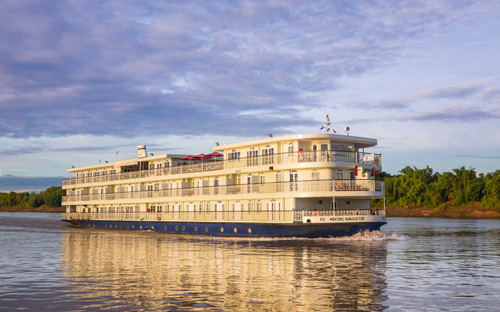Duration: 15 Days/ 14 Nights

With a design reminiscent of the French Colonial–era manor homes that once lined the streets of Old Saigon, the all-suite Mekong Navigator features a sophisticated and comfortable ambience. This beautiful ship—a new addition to our fleet in 2017—carries no more than 68 guests, assuring gracious and attentive service from our impeccably- trained staff. Every suite is a beautiful and tranquil retreat, a blend of timeless elegance and modern conveniences and luxuries. Public areas include the inviting Le Salon Lounge with full-service bar on the Sun Deck, La Bibliothèque Library & Internet Lounge, the Observation Lounge, Le Marché Restaurant, and the La Vie Spa and Fitness Center.
This post was last modified on March 26, 2018 2:30 am
Arrive at Tan Son Nhat International Airport. If your cruise/tour package includes a group arrival transfer or if you have purchased a private arrival transfer, you will be greeted by a Uniworld representative and transferred to your luxury hotel.
You will be greeted with a private check-in, welcome drink and information packet at the hotel. An elegant flower arrangement and fruit platter await you in your room. Tonight, consider popping out to explore the lively Ben Thanh Night Market or one of the city’s quintessential evening cafés—either choice would mark a splendid start to your adventure.
As Asia’s “comeback kid,” there’s something so invigorating about Ho Chi Minh City, a busting metropolis with a youthful and innovative energy—and no wonder, given that more than half the population is younger than 35. Embrace the dynamic spirit of the city formerly known as Saigon on today’s panoramic tour. History melds with the boisterous present in Vietnam’s largest city, where skyscrapers tower over ancient temples and motorbikes putter along picturesque alleys.
It was founded in 1690; became the capital of French Cochinchina in the 1860s, when it was known as Saigon; and acquired its modern moniker in 1976, when it was named for Communist leader Ho Chi Minh.
Ready for an adventure? Today’s featured excursion provides a fascinating glimpse of the Viet Cong’s vast network of incredibly narrow, booby-trapped tunnels dating from the Vietnam War. If you dare, you can even climb down inside for an up-close look.
Today’s featured excursion may be the most profound and memorable experience of your entire journey. You will learn about the infamous Killing Fields of the Khmer Rouge and visit a former school-turned-prison that is now a genocide museum.
Featured Excursion:
The killing fields-tragedy and reconciliation in Cambodia.
Its hard to reconcile the pastoral serenity of the orchards and rice fields surrounding Choeung Ek with the horrific mass executions that took place here during the brutal reign of the Khmer Rouge, yet the memorial stupa filled with the skulls of Pol Pot’s victims tells the tale. These were Killing Fields, where more than 17,000 men, women and children were slaughtered and buried in mass graves.
First, however, they were tortured in Security Prison 21 (also known as S-21), a former high shool on the outskirts of Phnom Penh, now the Tuol Sleng Genocide Museum, which you will also visit today. The guards and staff of the prison were mostly adolescent males-aged 15 to 19-among whom was a young photographer whose job was to document the prisoners.
Though many of his photo were destroyed, 6000 of them remain, displayed on the walls here, as you look at these portraits, you will see grief, fear, defiance-and you will be heartbroken to learn that out of the thousands held here, only seven survived. Those who were killed at Choeung Ek were just a small fraction of the almost two million Cambodians who died in a three-year period between 1975 and the beginning of 1979.
Siem Reap is your base for exploring Angkor Wat, the heart of the ancient Khmer empire. The city has an allure all its own, with sprawling markets, a lively dining scene and enticing street food.
You’ll disembark in the morning and transfer via executive motor coach to Siem Reap, a place name that means, literally, “Defeat of Siam”—which tells you something of its history. It is the gateway to Angkor, the legendary archaeological site.
Vn-One pillar Pagoda – Hanoi
If your cruise/tour package includes a group departure transfer or if you have purchased a private departure transfer, you will be transferred to Hanoi’s Noi Bai International Airport for your flight home or continue your tour with an extraordinary Ha Long Bay optional extension program or unique Sapa optional extension program.
– There may be cancellation fees charged by suppliers (hotels, airlines…) once these bookings are made and paid. These fee shall by paid by travelers.
– These are maximum cancellation fees to be flexible applied:
This website uses cookies.